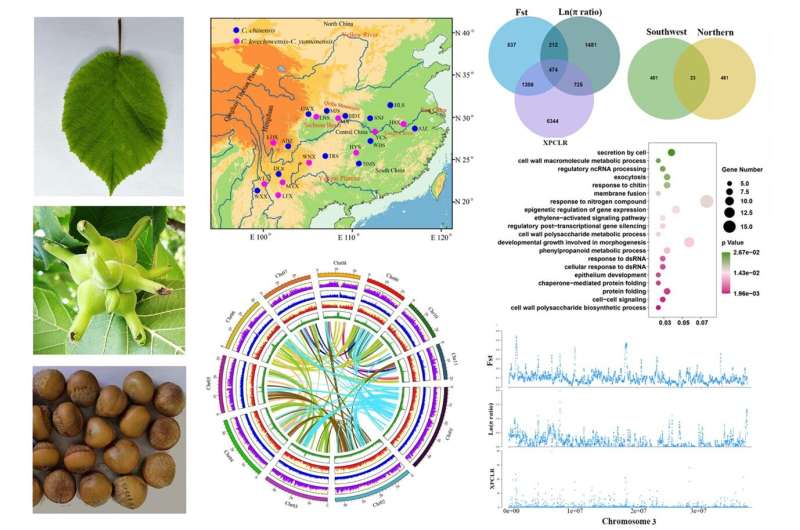This article has been reviewed according to Science X's editorial process and policies. Editors have highlighted the following attributes while ensuring the content's credibility:
fact-checked
proofread
Genetic resilience and adaptation of the endangered Chinese hazelnut

Endangered species are often characterized by severe population decline or even near-extinction status during their demographic histories. Such threats usually stem from historical climate changes and human activities.
For small, isolated populations, genetic drift can lead to inbreeding depression, erosion of genetic diversity and accumulation of deleterious mutations, which further decrease the adaptive potential and increase the extinction risk when facing volatile natural habitats or climate. Elucidating the demographic history of threatened species and the impact of genomic erosion on endangerment is fundamental to implementing effective management and conservation.
Corylus chinensis (CCH), the Chinese hazelnut, was widely distributed across Asia during the Tertiary period. However, it is now endangered and only disjunctively distributed in the mid-high mountains of subtropical China. Notably, its genetic characteristics, demographic history and adaptive potential remain largely unknown.
To that end, a team of researchers from China generated the first chromosome-level genome of the endangered C. chinensis, performed genomics and conservation genomics study, and compared the genomic signatures of population collapse, local adaptation, and genetic recovery with its sympatric widespread C. kwechowensis–C. yunnanensis complex (CKY).
The study is published in the journal Plant Diversity.
"We found large genome rearrangements across all Corylus species and identified species-specific expanded gene families in C. chinensis that may be involved in adaptation," says co-corresponding author Zhaoshan Wang. "Population genomics revealed that both CCH and CKY had diverged into two genetic lineages, forming a consistent pattern of southwest-northern differentiation (SW vs. N)."
Specifically, demographic inference suggested that population size of the narrow SW lineages (CCH_SW and CKY_SW) decreased continuously since the late Miocene, while the widespread N lineages remained stable (CCH_N) or even recovered (CKY_N) from population bottlenecks during the Quaternary.
Compared with CKY, CCH showed comparable genomic diversity and heterozygosity, but higher inbreeding levels measured by runs of homozygosity. However, CCH carried significantly fewer deleterious mutations than CKY, as more effective purging selection reduced the accumulation of homozygous variants.
"We also detected significant signals of positive selection and adaptive introgression in different lineages, which facilitated the accumulation of favorable variants and formation of local adaptation. Hence, both types of selection and exogenous introgression could have mitigated inbreeding and facilitated survival and persistence of outcrossing CCH," adds Wang.
Overall, the study provides critical insights into the lineage differentiation, local adaptation and potential for future recovery of endangered trees.
More information: Zhen Yang et al, Conservation genomics provides insights into genetic resilience and adaptation of the endangered Chinese hazelnut, Corylus chinensis, Plant Diversity (2024). DOI: 10.1016/j.pld.2024.03.006
Provided by KeAi Communications Co.


















